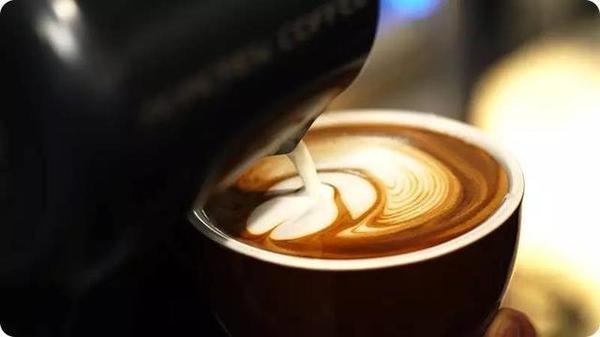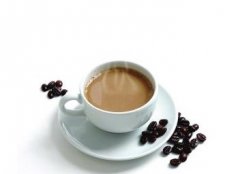The difference, distinction and award-winning situation of single bean in Fuyin Manor, Indonesia

For professional baristas, please follow the coffee workshop (Wechat official account cafe_style)
The difference, distinction and award-winning situation of single bean in Fuyin Manor, Indonesia
JAVA
In Indonesia, this area inherits Dutch colonization and habits, so there are more large coffee estates. The four main coffee fields, covering 4000 hectares, were formerly government estates. At that time, the coffee beans in this region enjoyed a first-class reputation, although I believe that not long ago, a large number of formula beans have been replaced by other coffee beans "Mocha-Java". Java coffee beans have been high for a long time, but there have been significant price reductions in the 20th century. The planting area covers the east side of Java around the Ijan volcano, as well as the west side.
Altitude: 900-1800m
Harvest: September-September
Variety: Typicas, Ateng, USDA
SULAWESI
Even though seven major estates supply about 5% of Sulawesi's production, local production is dominated by the supply of small farmers. Most Arabica beans are grown high around Tana Toraja, while Kalosi in the south becomes a brand, and there are two less well-known areas: Gowa, west of Mamasa and south of Kalosi. A small number of particularly interesting coffee beans are washed with water, which is worth thinking about, and it is highly recommended to try it when you have the opportunity. Semi-washing treatment is a common method in Sulawesi, and the local area also produces a lot of Rob beans.
Altitude: Tana Toraja 1100-1800m Mamasa 1300-1700m average 850m
Harvest: may-November
Variety: S795, Typicas, Ateng
FLORES
Flores is a small island about 320km (200miles) east of Bali and is located in one of the Indonesian archipelago. As a latecomer to the coffee industry, it has also developed a good reputation for growing coffee. In the past, it was common to see that a large part of Flores's coffee was sold domestically or mixed with other coffee exports, rarely sold directly in the name of "Flores Coffee". There are active and dormant volcanoes on the island, and the mixture of Bajawa volcanoes has a great positive impact on the main planting areas. In terms of coffee processing, the semi-washing process is the most common treatment in the region, and some coffee beans are still produced by full-water treatment.
Altitude: Tana Toraja 1200-1800m Mamasa 1300-1700m average 850m
Harvest: may-September
Variety: Typicas, Ateng, Robusta
BALI
Coffee arrived late in Bali and was originally grown on the Kintamani plateau. Coffee production was deeply affected by the eruption of Gunung Agung in 1963, killing more than 20, 000 people and extensively destroying the eastern part of Bali. In the late 1970s and early 1980s, the government distributed Arabica bean seedlings to boost coffee production, but some thought the effect was limited because about 80% of the island's production today is robusta beans. Although tourism provides the largest income, agriculture employs the most people on the island, while Japan used to be the biggest buyer.
Altitude: 1250-1700m
Harvest: may-October
Variety: Typicas, Typica derivatives, Robusta
At first, Indonesian coffee was Arabica, and the Arabica manor was destroyed by a leaf rust disaster at the end of the 18th century. at first, the Dutch tried to grow Liberian seeds, and later, they began to plant Robsta seeds on a large scale.
At present, Arabica accounts for about 10-15% of the coffee produced in Indonesia, and the rest is Robusta. Although Liberika is productive, it is basically not included in the coffee trade.
Sumatra, the second largest island in the Indonesian archipelago, is the center of Indonesia's oil industry, and its rubber and timber are also famous exports. However, the coffee in Sumatra is more eye-catching, which is similar to Java coffee, but with slightly heavier grains. Coffee beans from Mandheling and Ankola have also received a lot of attention, and the former is even known as the world's fullest coffee beans.
The island of Sulawesi, located between Borneo and New Guinea, is sometimes called Celebes. The coffee produced on the island is full of grains and rich in flavor. The best coffee beans come from Kalossi and Rantepao in the southern part of the island. Among the many tastes of spleen, try Celebes Kalosi coffee.
When ships replaced sailboats, coffee produced on these islands faced the same problem as Indian coffee from Mysore-that is, consumers were so used to coffee affected by long-distance travel that they were reluctant to accept the taste of this "fresh" coffee. To solve this problem, the Indonesian government has tried its best to copy coffee affected by long-distance travel, and they have "stored" coffee beans for up to a year. However, what is not satisfactory is that the taste of this wetted coffee is not so widely accepted that it affects the good reputation of its coffee.
However, Indonesia's "stored" coffee, or "journey" coffee, is still produced today. Its sales brands are generally OldGovernment, OldBrown and OolJava.
Although Indonesia produces so much admirable coffee, it is puzzling that local residents prefer Turkish-style coffee to its famous European-style coffee in the mid-17th century. Coffee trees were introduced to Indonesia by the Dutch (some official sources believe that earlier). The first batch of coffee from Java was sold to Amsterdam in 1712. However, coffee trees in all plantations were destroyed by coffee rust in 1877, and Robart coffee trees had to be introduced from Africa to replace the original species. Today, only 6% of coffee beans and 10% of coffee beans are Arabian coffee beans. Indonesia is the world's leading producer of Robert's coffee, producing 6.8 million bags of coffee a year, with more than half of the coffee coming from small plantations, accounting for about 90 per cent of the total production.
Java produces exquisite aromatic coffee with relatively low acidity, delicate taste and good balance. Java coffee has a better aroma and acidity than coffee from Sumatra and Sulawesi. The best plantations in Java are Blawan, Jambit, Kayumas and Pankur. Java mocha is a mixture of Java coffee and Yemeni mocha coffee.
Sumatra, the second largest island in the Indonesian archipelago, is the center of Indonesia's oil industry, and its rubber and timber are also famous exports. However, the coffee in Sumatra is more eye-catching, which is similar to Java coffee, but with slightly heavier grains. The coffee beans of Mandheling and Ankola are also highly valued, and the former is even regarded as the most full-grained coffee beans in the world.
Java coffee beans are famous for their early Java coffee, which refers to Arabica coffee formerly grown on the island of Java. It has a strong aroma, low acidity, taste lubrication, mixed with mocha coffee, the resulting "Java mocha mixed coffee" was once popular and became synonymous with top coffee.
At that time, Java coffee sold to Europe was a very special kind of coffee. At that time, it was shipped to Europe and the United States by sailboat, and the distance was long and the speed was slow, so it took a lot of time to transport. In this case, the coffee seems to have undergone a special fermentation and has a very unique taste.
Later, when the ship replaced the sailboat, due to the shortened delivery time, people drank relatively fresh coffee beans. But people who are used to drinking Chen beans are not used to the fresh taste, so they desperately pursue old Java coffee, so that the Indonesian government and some businessmen deliberately store fresh beans in warehouses for one or two years and then sell them to consumers. In fact, compared with fresh beans, the acidity of aged Java beans is close to zero, but the flavor is more intense. Because of the long storage time, the increase in cost and the limited quantity, Java has always been a hot item in the coffee market. In the 1880s, 0 merchants deliberately tampered with some fresh Guatemalan or Venezuelan beans to imitate aged Java for high prices. It is intolerable that 0 merchants dye coffee beans to make them look more like old Java, but there is no doubt that the dyed chemicals are certainly toxic.
Among the Asian coffee-producing countries, Indonesia is a very noteworthy one. Indonesia is an island country in the Indian Ocean, the islands are distributed on both sides of the equatorial line, of which three islands: Java, Sumatra and Sulawesi produce the world's important coffee. In the mid-17th century, the Dutch brought coffee trees to Ceylon (Sri Lanka) and Java, Indonesia. In the 18th century, Indonesia became a major producer of coffee, and almost all of its high-quality Arabica coffee was supplied to Europe. But by the 19th century, coffee rust, which appeared in Ceylon in 1869, also affected Indonesia. By 1877, most of the coffee fields on the Indonesian islands had been damaged by rust, and the Dutch had to import other coffee varieties from Africa, namely Romsda coffee. It is more resistant to diseases and insect pests, but its quality is inferior. About 90% of Indonesian coffee is Romda beans, about 6.8 million bags a year, and less than 10% of the beans are Arabica coffee. Java coffee, the oldest producing area, has been famous since the glory days of Indonesian coffee in the 18th century. Java coffee is still reminiscent of quality and delicacy, when the most famous mix is Java coffee with Yemeni mocha. In addition, Java also has a very famous old coffee Aged coffee, or monsoon coffee Monsooned coffee.
Java produces only a small amount of Arabica beans, most of which were imported from Africa after the rust disaster. This coffee has a strong bitter taste after roasting, but the aroma is extremely light. Although it has low acidity and delicate taste, it is rarely used for direct drinking. It is often used to mix mixed coffee, or to make instant coffee. Java coffee is produced in Java, Indonesia. It belongs to Arabica coffee. After baking, the bitter taste is extremely strong and the aroma is very light, without sour taste. The bitterness and mellowness of Java coffee, coupled with the sweetness of chocolate syrup, make Java coffee more mellow and palatable and very popular with women!
Sumatra, the most legendary producing area, well-known coffee logos include Mandheling Mantenin, Lintong Lintong and Gayo Mountain Gayusan.
Sulawesi Island, famous coffee includes Delaga Toraja.
In addition, Bali, Flores and Timor are also important producing areas.
Coffee planting mode
In the Dutch colonial era, coffee was mainly grown in large estates. After World War II, it experienced the process of nationalization and the movement of independence. Today, about 90% of the coffee produced in Indonesia is produced by small farmers.
Coffee variety
On the whole, Indonesian coffee has a strong flavor, mellow taste, slightly syrup flavor and excellent acidity, and its two main export markets are Germany and Japan, which reflects the excellent quality of the coffee. What attracts consumers is the unique quality of its Arabica coffee beans. You can add milk or cream to high-quality Indonesian coffee without worrying about affecting its taste. Indonesian coffee is divided into six grades, the best of which is AP. But no one knows exactly what these two capital letters stand for.
Indonecia Indonesia
Population: 237424000
In Indonesia, coffee beans slowly grew from Java to neighboring islands, first to Sulawesi in 1750, but not to northern Indonesia at that time. Until 1888, when planting began around Lake Lake Toba, it eventually spread to Lake Lake Tawar in the Gayo region in 1924.
SUMATRA
Sumatra has three main growing areas: the northern part of Aceh, the slightly southward area around Lake Lake Toba, and the recent rise of islands near Mangkuraja. It may also be traced back to smaller areas of Takengon, Bener Mariah, Lintong, Sidikalang, Dolok Sanggul, and Seribu Dolok, which surrounds Lake Doba in Aceh. In the past, the coffee beans sold in this area were called "Sumatra Mantenin", but in fact there was no place name called Mantenin, which came from the ethnic names of the local islanders. Manning is usually divided into grades, classified as Grade1 or Grade2. There is no doubt that the grading method is to use the cup to test the quality rather than the raw bean itself. But I still have doubts about recommending Grade1 because the rating seems to be overdone. It is strange to divide different varieties into different batches, so most Sumatran coffee beans are mixed with unknown varieties. Sumatran coffee beans are exported through the port of Medan, but stagnated in the port for too long before export, hot and humid climate factors will not be conducive to the quality of coffee beans.
Altitude: 1100-1300m in Aceh, 1100-1600m in Lake Doba, 1100-1300m in Mangkuraja
Harvest: September-December
Varieties: Typica (including Bergandal, Sidikalang, Djember), Timtim, Ateng, Onan Gajang
Important Notice :
前街咖啡 FrontStreet Coffee has moved to new addredd:
FrontStreet Coffee Address: 315,Donghua East Road,GuangZhou
Tel:020 38364473
- Prev

History, culture and story allusions of sacred boutique beans of Paradise Bird Manor in Papua New Guinea
Professional barista exchanges please follow the coffee workshop (Wechat official account cafe_style) Papua New Guinea Paradise Bird Manor Saint boutique beans history and culture, stories and allusions Papua New Guinea is located in the island of Guinea, with Indonesia but coffee taste with Mantenin's round beans completely Papua New Guinea, taste clean, full of flowers and back to PNG coffee
- Next

Flavor characteristics, producing areas and cooking parameters of single bean in Fuyin Manor, Indonesia
For the exchange of professional baristas, please pay attention to the coffee workshop (Wechat official account cafe_style) Indonesia Fuyin Manor single bean flavor characteristics, production areas and brewing parameters SUMATRA Sumatra there are three main growing areas: the North of Aceh, the area slightly south around Lake Lake Toba, and the recent rise in the islands near Mangkuraja. Maybe it's okay.
Related
- Does Rose Summer choose Blue, Green or Red? Detailed explanation of Rose Summer Coffee plots and Classification in Panamanian Jade Manor
- What is the difference between the origin, producing area, processing plant, cooperative and manor of coffee beans?
- How fine does the espresso powder fit? how to grind the espresso?
- Sca coffee roasting degree color card coffee roasting degree 8 roasting color values what do you mean?
- The practice of lattes: how to make lattes at home
- Introduction to Indonesian Fine Coffee beans-- Java Coffee producing area of Indonesian Arabica Coffee
- How much will the flavor of light and medium roasted rose summer be expressed? What baking level is rose summer suitable for?
- Introduction to the characteristics of washing, sun-drying or wet-planing coffee commonly used in Mantenin, Indonesia
- Price characteristics of Arabica Coffee Bean Starbucks introduction to Manning Coffee Bean Taste producing area Variety Manor
- What is the authentic Yega flavor? What are the flavor characteristics of the really excellent Yejasuffi coffee beans?

